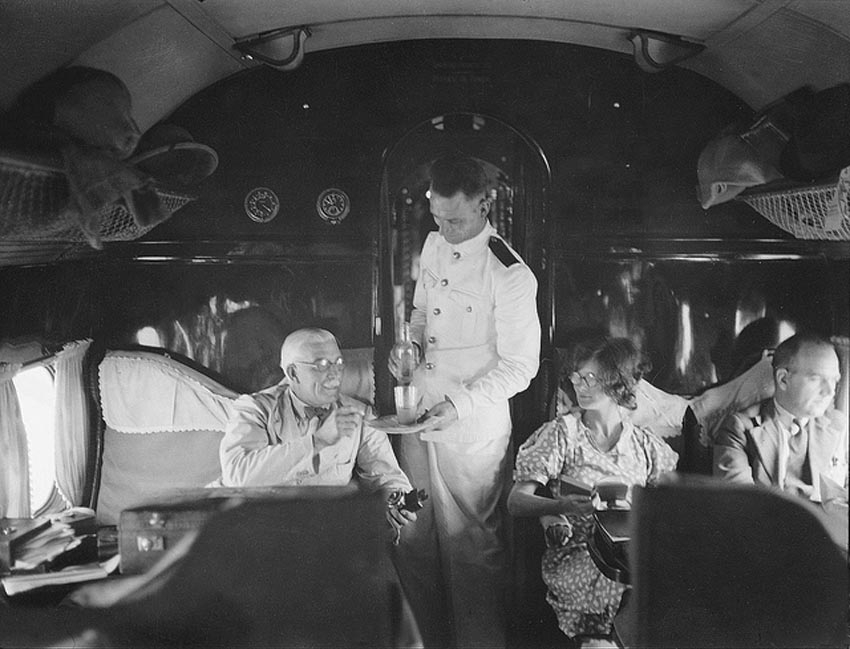England’s Handley-Page company had developed large and powerful bombers during World War I, and had the new O-100 model coming off the assembly line just as the war ended. These were converted first to military transports, then to a civilian air liner that was furnished in almost Victorian luxury. Note the interior in this shot from about 1920:
My favorite detail is the candelabra… with the exception of the round windows, this might have been a particularly narrow luxury railroad car. There were neither heating or refrigeration facilities aboard, but cold suppers were loaded in wicker boxes lined with hay for insulation, and stewards in spotless whites poured hot drinks from thermos bottles.
The Handley-Page company became so famous for their large aircraft that any big plane was referred to as a Handley-Page, which must have made their competitors furious. The company built increasingly luxurious biplane airliners such as the model 42, which debuted in 1928. Here’s a cross-section – you can see a tiny galley marked “stewards” beneath the wing, next to the cocktail bar:
And here’s an image of service aboard a Handley-Page 42 over Africa – note that the dapper gentleman on the left has a pith helmet in the luggage rack, the proper attire for the well-prepared traveler.
The company’s last biplane airliner was introduced in 1929, and they didn’t make another civilian aircraft until 1950 with the turboprop Hermes model. Their postwar efforts were inferior to those built by Vickers and American companies, though they produced one fine design, the Jetstream commuter aircraft, before going bankrupt in 1960. It was a sad end for a company that once produced beautiful and technically brilliant aircraft reengineered from weapons of war.
